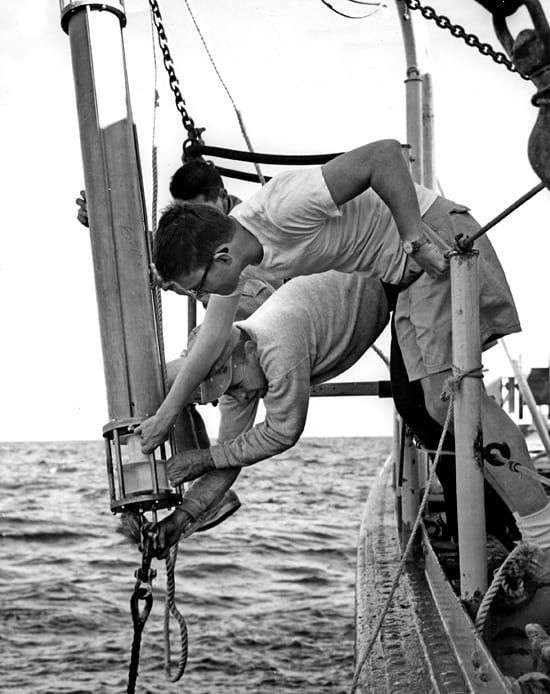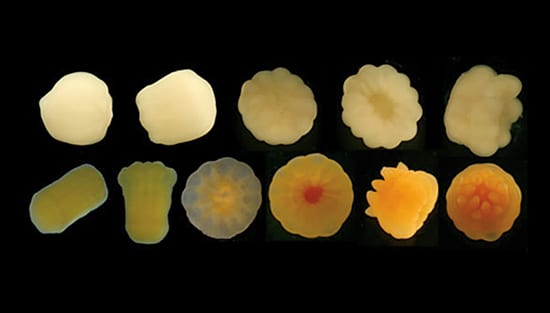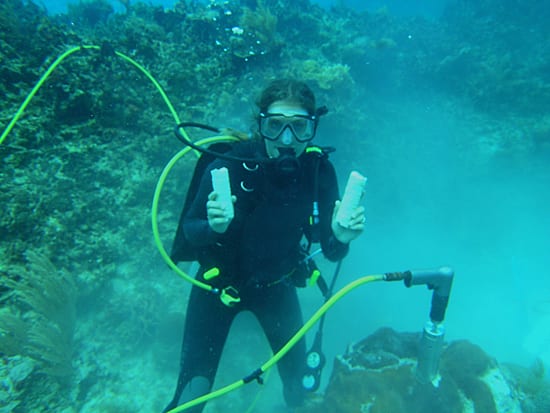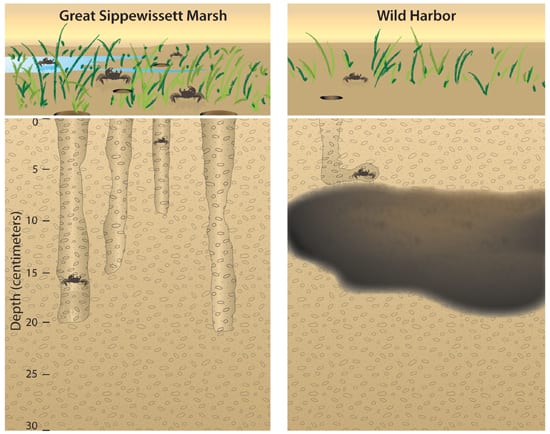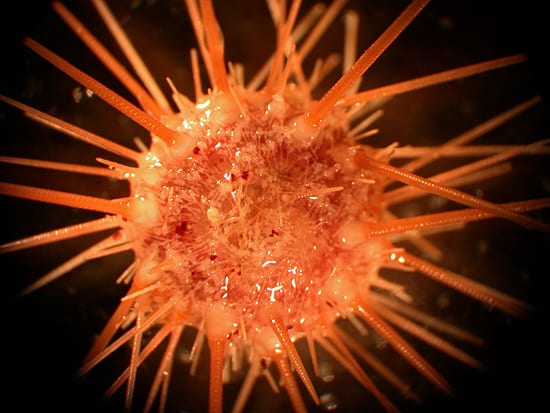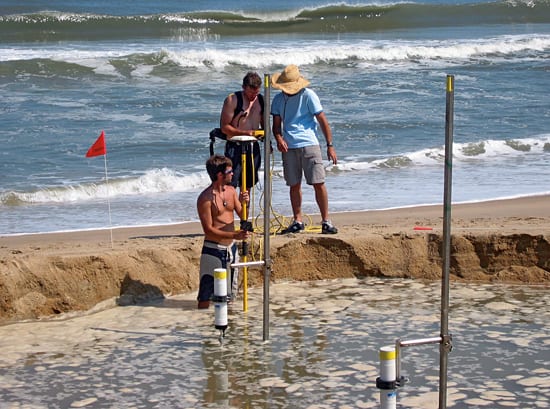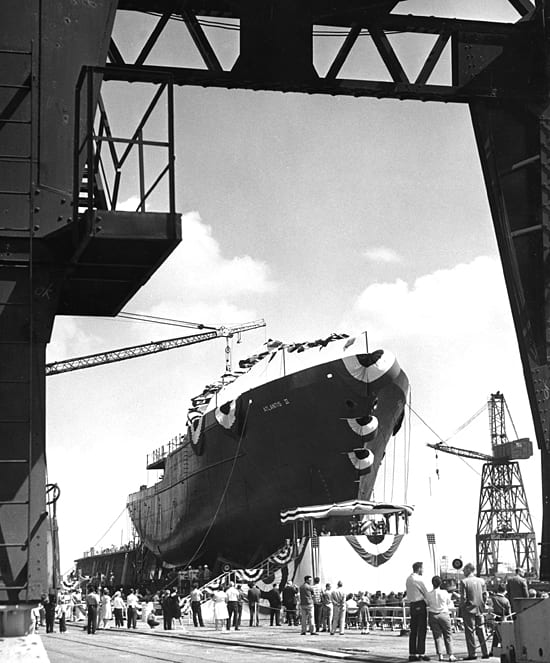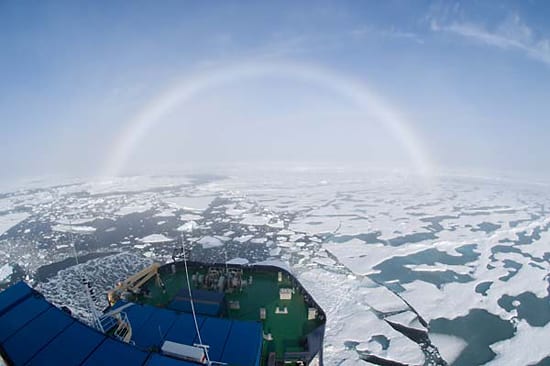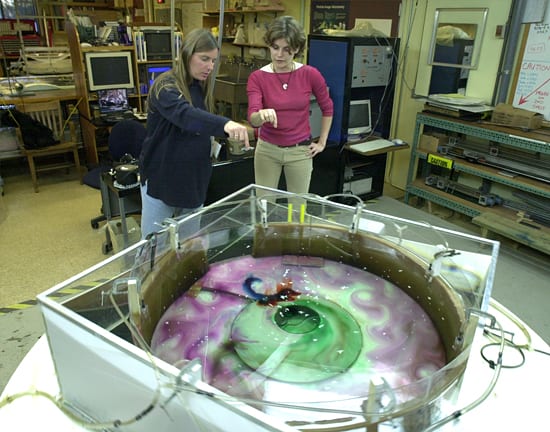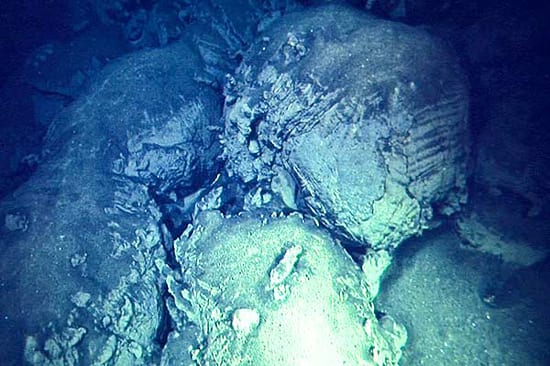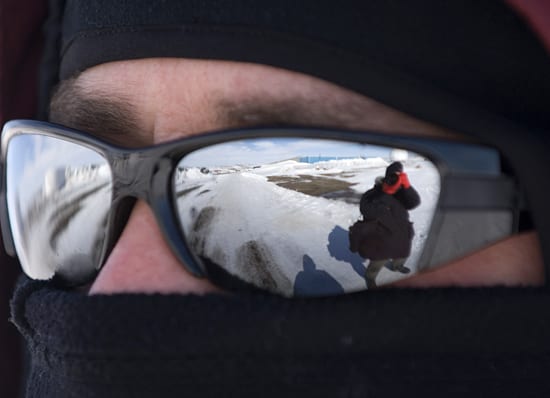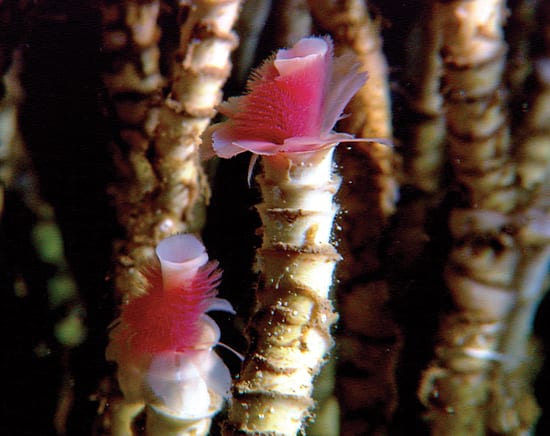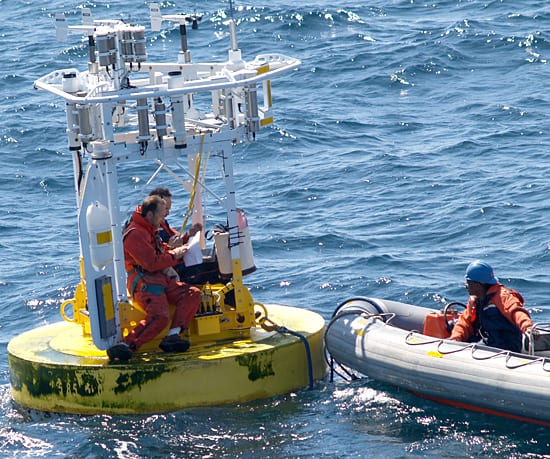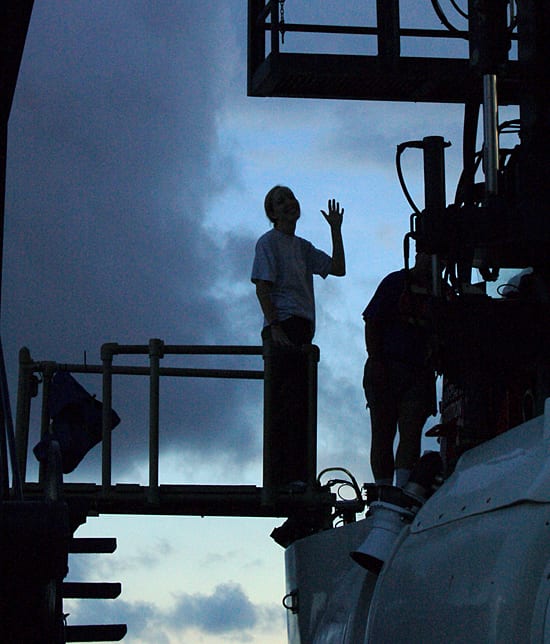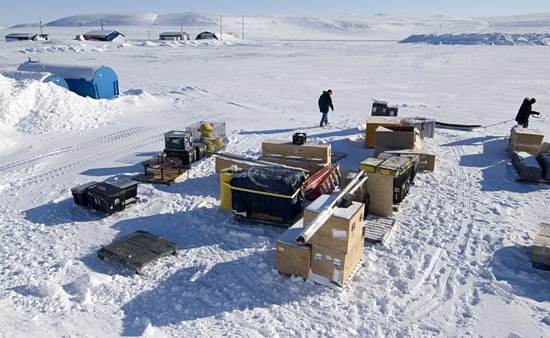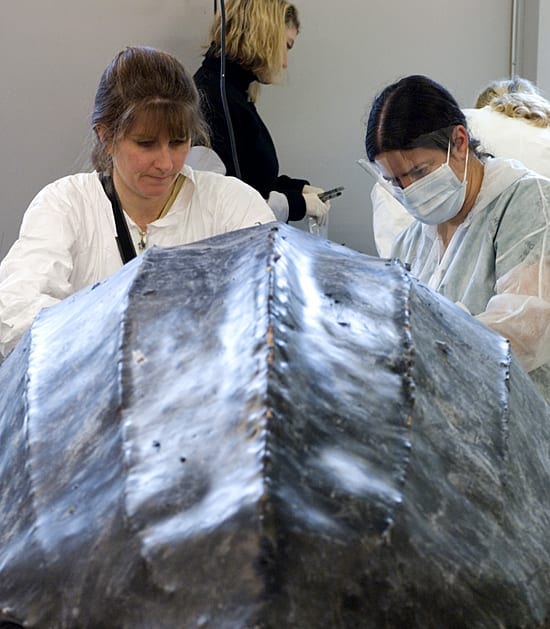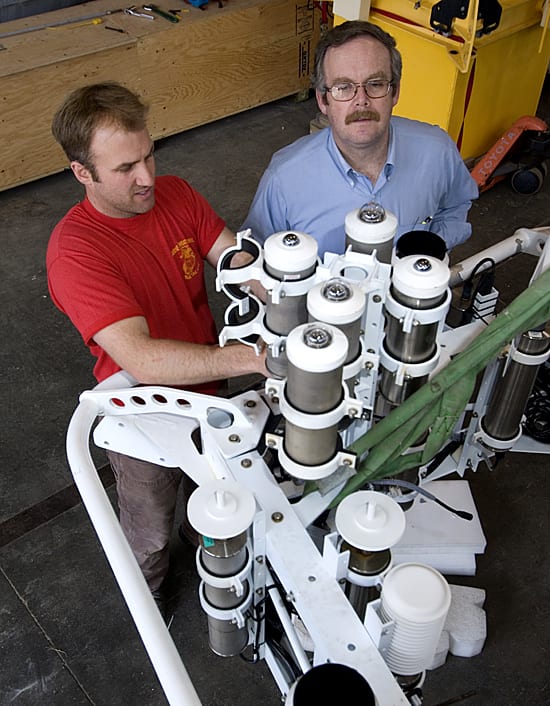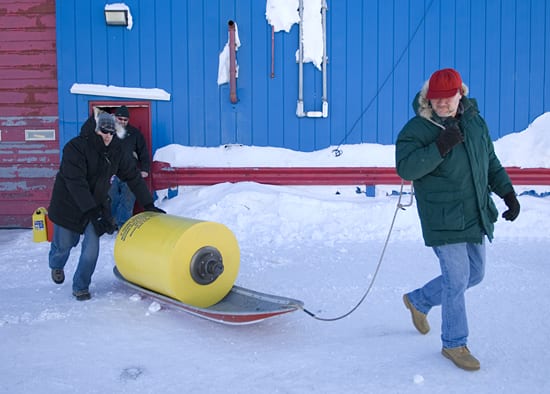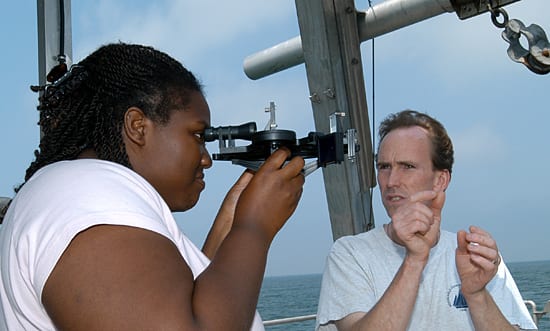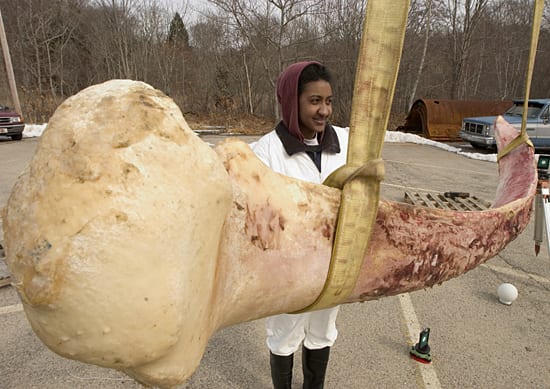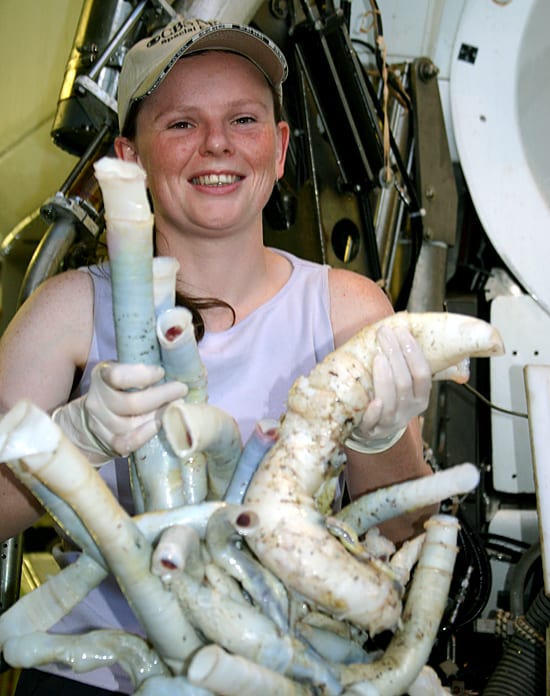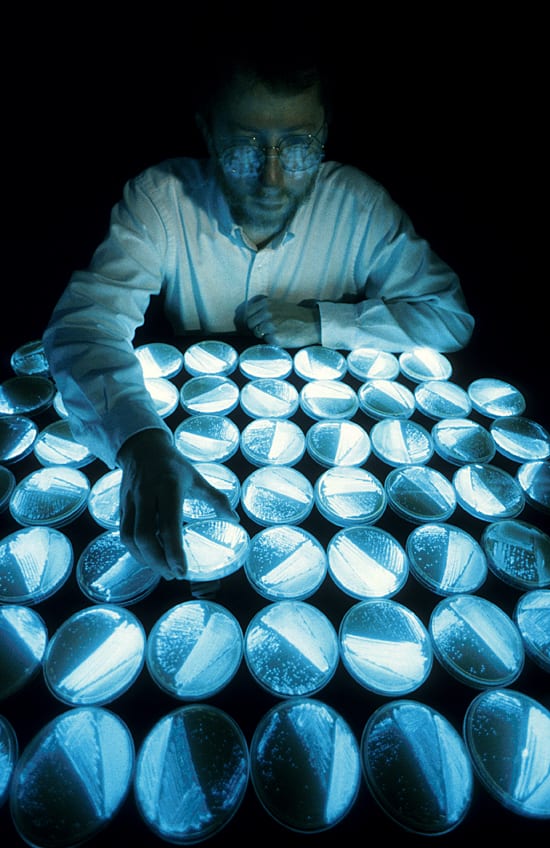Multimedia
Keeping Current
Marvel Stalcup (foreground, with glasses) and Gus Day launch instruments from the research vessel Crawford in the 1960s. The sensor at bottom was an early electronic current meter, used to…
Read MoreBaby Pictures
The tiny offspring of two species of deep-sea corals from Antarctica changed from shapeless larvae (left) into tiny, tentacled corals (right) within 24 hours of brooding. Biologist Rhian Waller of…
Read MoreCore-al Samples
Jessica Carilli, a graduate student from the Scripps Institution of Oceanography, holds two core samples that she and WHOI marine chemist Konrad Hughen have just drilled from a colony of…
Read MoreDrunken Crabs
Through a series of field observations and laboratory experiments, graduate student Jennifer Culbertson, marine chemist Chris Reddy, and colleagues found that the burrowing behavior and other biological traits of salt…
Read MoreSweet Hitchhiker
This sea urchin was collected from the ocean floor near the Galapagos Rift in June 2002. The hitch-hiking urchin was found in the basket on the front of the Alvin…
Read MoreSurf’s Down
MIT/WHOI Joint Program student Alex Apotsos (front), research assistant Levi Gorrell, and scientist Mike Forte (with hat) of the U.S. Army Corps of Engineers, survey changes in beach shape in…
Read MoreDreams of Atlantis
The research vessel Atlantis II was officially launched on September 8, 1962, at the Maryland Shipbuilding and Drydock Co, though it was not until the next year that she made…
Read MoreSt. Louis Has Nothing on This Arch
Fogbows usually appear in the Arctic Ocean whenever overcast skies clear, as water droplets in the fog reflect and refract the beams of sunlight. The bow of the Swedish icebreaker…
Read MoreOcean on a Table
WHOI physical oceanographer Claudia Cenedese (left) and Rachel Bueno de Mesquita, a visiting researcher from the University of Rome, developed this laboratory experiment to study fluid flow and eddies around…
Read MoreCold Pillows
The camera on the new Camper towed underwater vehicle photographed these pillow lavas on the seafloor of the Arctic Ocean along the Gakkel Ridge in mid-July 2007. Researchers have been…
Read MoreSaving Face
Even in the springtime, the air and winds in the Arctic can be so cold that skin grows raw and wind-burned after just a few minutes. The moisture in your…
Read MoreIt’s a Gas
Methane seeping from the seafloor sustains microbes that serve as the base of the food chain for communities of animals, like these tubeworms, which thrive in the sunless depths. Far…
Read MoreBuoy Riders
Service calls to buoys in the middle of the ocean are anything butroutine. In April 2006, research specialist Frank Bahr and senior engineering assistant Jeff Lord from the WHOI Upper…
Read MoreFirst Timer
Silhouetted in the early morning twilight, MIT/WHOI graduate student Carly Strasser waves farewell to her shipmates before boarding the Alvin submersible for her first dive. Strasser was accompanied by Monika…
Read MoreScience Gear in Deep Freeze
Crates and bins of science gear from WHOI and five other institutions were stacked up outside a research warehouse at the airport in Resolute Bay, Canada, in April 2007. Every…
Read MoreCSI Woods Hole
Bridgett Dunnigan of the National Marine Life Center and Joy Reidenberg of the Mount Sinai School of Medicine examine a 900-pound leatherback turtle during a necropsy in May 2007. Many…
Read MoreLighting Up the Abyss
A new light-emitting diode (LED) system built by Deep Sea Power & Light was recently tested on the Alvin submersible during engineering dives in June off San Diego. The green…
Read MoreTime to Check the Data
Physical oceanographer Bob Weller and engineering assistant Sean Whelan examine, inspect, and remove sensors from the long wave radiation and short wave radiation modules on the CLIMODE-2 buoy. The CLIVAR…
Read MoreITP Goes Sledding
WHOI research associate Rick Krishfield and engineering assistant Kris Newhall take part of an ice-tethered profiler (ITP) for a sled ride between a warehousewhere they tested and prepped itand outdoor…
Read MoreExpanding Horizons
Ken Houtler, captain of the coastal research vessel Tioga, teaches Summer Student Fellow DeAnna McCadney how to use a sextant during a demonstration cruise in July 2006. Every summer, dozens…
Read MoreCrabby Investigators
For decades, marine chemists and ecologists have been wondering: does the oil that was spilled into a Cape Cod salt marsh in 1969 still have an impact on the wildlife…
Read MoreWhat Does It Take to Break a Whale?
MIT/WHOI graduate student Regina Campbell-Malone put a 493-pound, 14-foot whale jawbone through a series of stress tests to assess the amount of force required to break whale bones. Campbell-Malone, advisor…
Read MoreCatch of the Day
Postdoctoral fellow Rhian Waller holds a bundle of tubeworms collected during a seafloor dive by scientists in the Alvin submersible to the Galapagos Rift. Waller is a benthic ecologist who…
Read MoreIlluminating Work
Former WHOI associate scientist Paul Dunlap works in his biology laboratory in 1995 on an experiment with bioluminescent bacteria. Marine organisms ranging from bacteria to fish make their own chemically…
Read More
